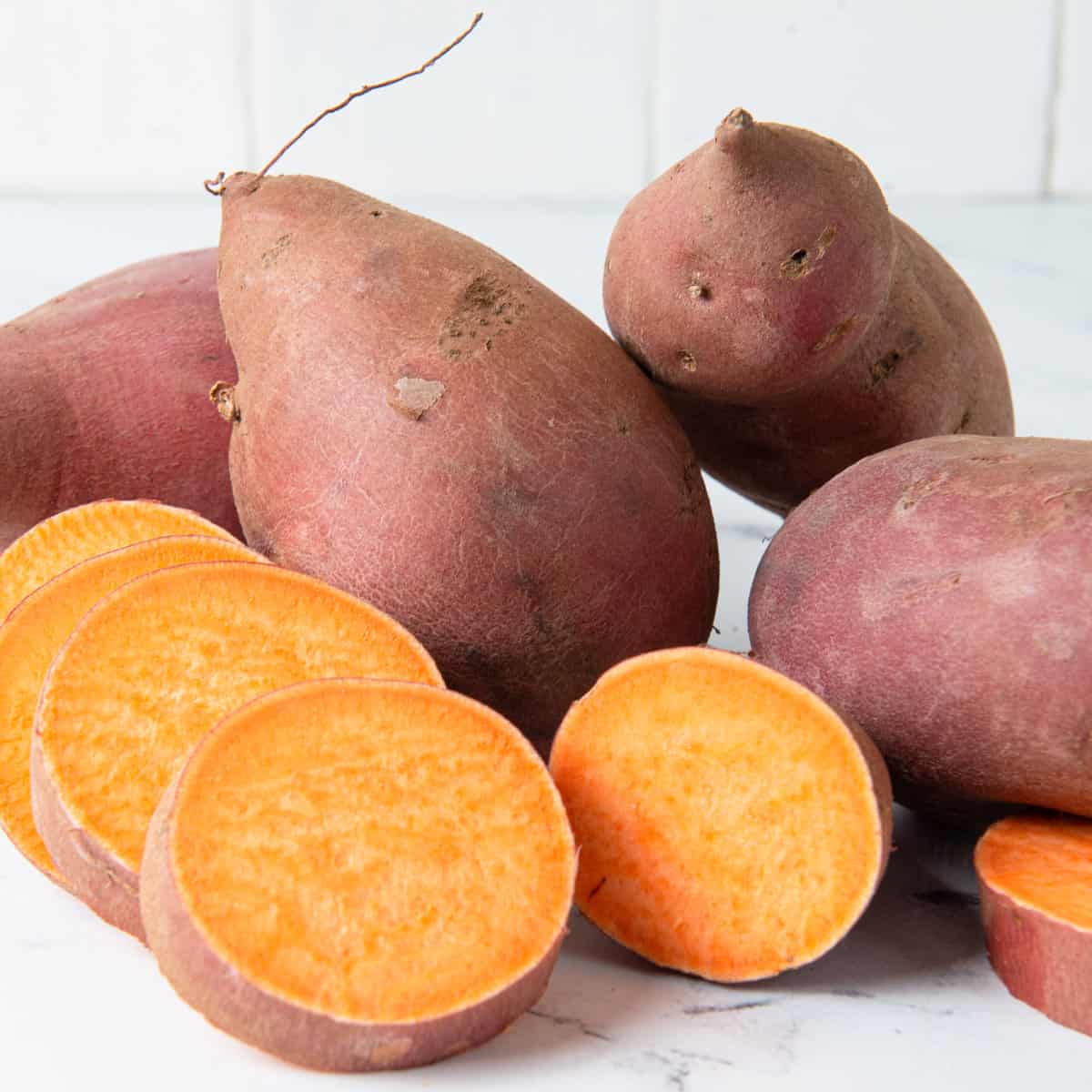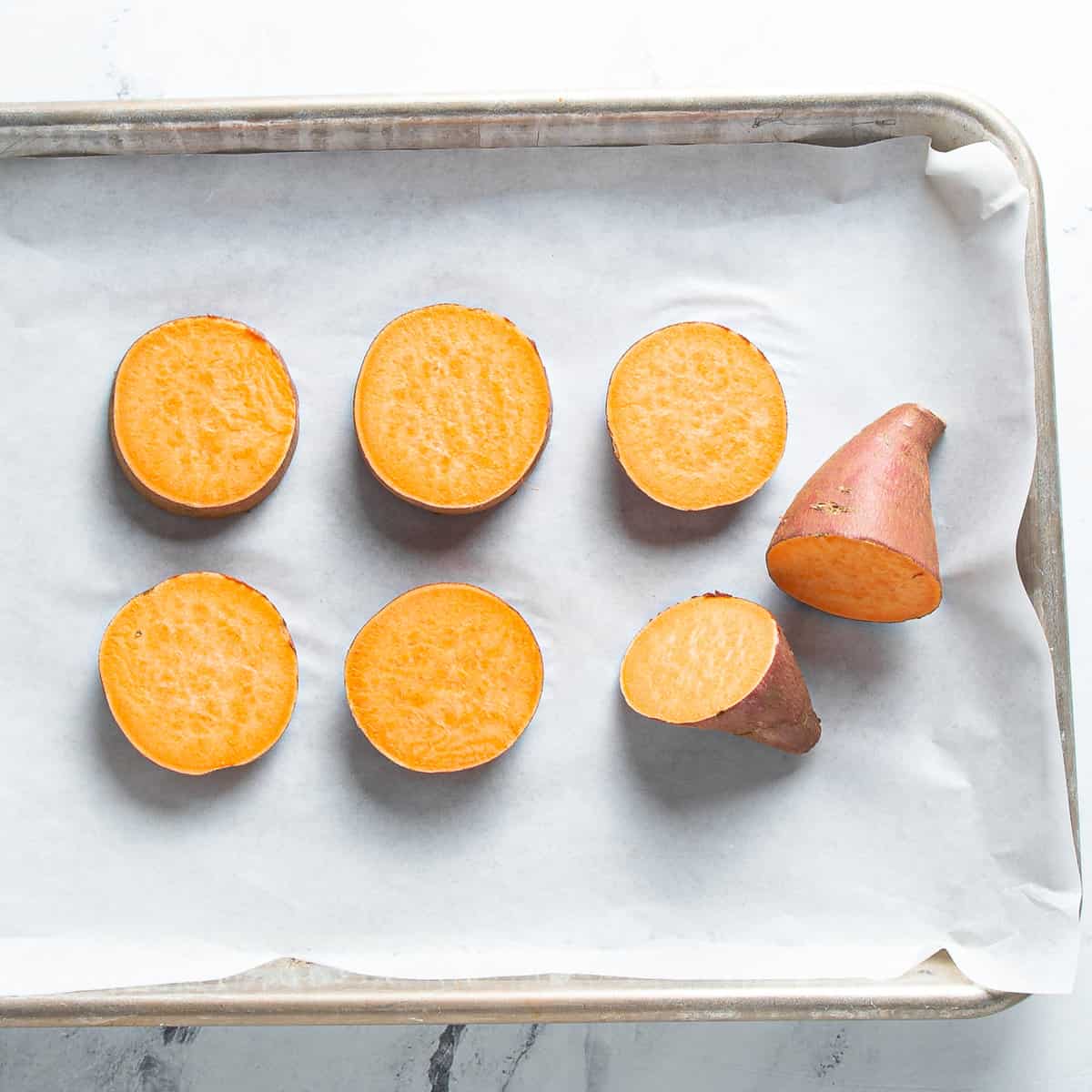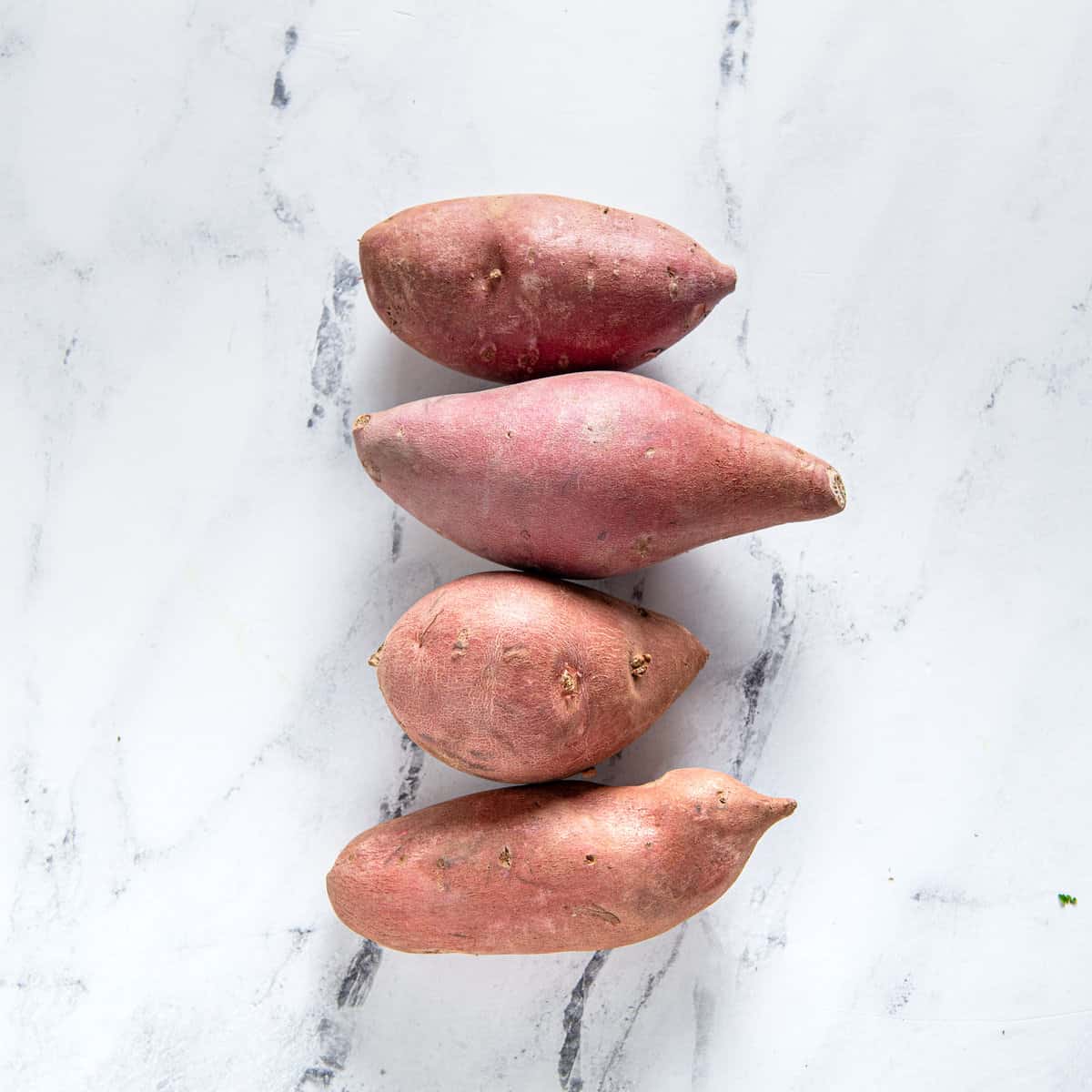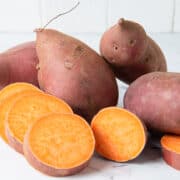Sweet potatoes, or yams as you might know them, make a delicious side dish, especially when generously loaded with butter. These Thanksgiving favorites appeal to almost everyone, so learn more about how to store sweet potatoes and you can enjoy these tasty root vegetables whenever you want.

Jump to:
Not only can you serve them as a side dish, but you can also make delicious desserts with this underground tuber. Examples include sweet potato cobbler, sweet potato pie, and even cupcakes.
Last Thanksgiving I made a brand new recipe, sweet potato souffle, which I was originally planning to make for dessert but it went so well with the turkey that everyone had it with their main dish and loved it! You might like to try the recipe out for yourself if you're looking for an alternative to sweet potato casserole next Thanksgiving.
What are Sweet Potatoes?
Sweet potatoes (Ipomoea Batatas) are members of the bindweed family and the big, sweet, tuberous roots are the part that's cooked and eaten. The young green leaves and shoots are also edible.
Although some people assume a "yam" is the same as a sweet potato, technically it's not. A yam is a different root vegetable altogether and has a rough brown skin rather than the smooth skin found on sweet potatoes. It's also interesting to note that sweet potatoes are only distantly related to regular potatoes.
Native to tropical parts of the Americas (probably South or Central America), sweet potatoes have been around for at least 5,000 years. The first Europeans to try sweet potatoes were on Columbus' 1492 expedition, and that's how the first sweet potato made its way to Europe, first in Spain and then to the warmer parts of Europe.
During the late 1500s, sweet potatoes were introduced to China, and from there they spread through Africa and Asia during the 1600s and 1700s. Spanish and French settlers in Louisiana especially loved sweet potatoes and they've been cultivated there since this time.
Most grocery store fresh sweet potatoes have orange flesh, but other varieties come in different colors including pink, red, white, purple, and yellow.
Nutrition-wise, they offer plenty of fiber, along with beta-carotene, potassium, manganese, and Vitamins A, B5, B6, C, and E. There are various cooking methods to choose from such as baking, steaming, boiling, and frying. Similar-tasting vegetables include pumpkin and butternut squash, which can be substituted in many sweet potato dishes.
How to Buy Sweet Potatoes
Small or medium sweet potatoes with no cracks or bruises are the best option, and freshly harvested ones with the roots still on will keep longer. Make sure the skin is smooth and not wrinkled because that's a sign of age.
As long as you can inspect the potatoes, it is often cheaper to buy a bag of them rather than selecting them individually, especially once you know how to store raw sweet potatoes to maximize their shelf life. You can also buy frozen chopped sweet potatoes which will work in recipes such as soups or pies.
Something else to consider is growing your own sweet potatoes, as long as you live somewhere warm or hot. Sweet potato plants can't tolerate frost.

How to Store Sweet Potatoes
These underground tubers don't need to be kept in a root cellar if you have another cool, dry place, and they can last for weeks so it's worth buying a bagful. These tips should help you choose the best storage method for sweet potatoes.
- Keep whole sweet potatoes somewhere dry and cool and use them within a week. For the best results, ensure they are somewhere with ventilation, not in the plastic bags they came in unless they're left open or perforated. A paper bag left slightly open would work well.
- If you want to keep them for longer than a week, the best way to ensure they stay fresh during long-term storage is to "cure" them. This means keeping them between 75°F and 80°F and at high humidity (90% to 95% is best) for a week or two, so they develop a second skin over bruises and scratches and last longer.
- Ventilation is important, so you might want to use an electric fan to increase it, preventing rot and mold, and don't let the sweet potatoes touch. As much air circulation as you can give them is always best.
- After the curing process, discard any spuds that are rotting or bruised and wrap the remaining sweet potatoes individually in newspaper or brown paper bags and keep them in a cardboard box, in a cool, dark place like a basement or root cellar if available.
- Make sure they're kept in a storage room with relative humidity and out of direct sunlight.
- The sweet potatoes can last up to 6 months in a cool, dry area after the curing process.
Don't refrigerate sweet potatoes, otherwise, they will get a hard center and the flesh texture won't be as good. You can freeze them whole, mashed, or sliced for a long time, even up to a year.
Freeze whole sweet potatoes by piercing the skin in several places using a fork or sharp knife and baking them for an hour at 425°F. Let them cool and wrap them individually in aluminum foil, then add them to a freezer bag.
Freeze sliced sweet potatoes by scrubbing them and boiling them for 30 minutes or until tender. Drain, cool in cold water, peel, and slice, then freeze them in a single layer on a baking sheet covered with parchment paper. Transfer the sweet potato slices into a freezer bag and seal well to avoid freezer burn.
Freeze mashed sweet potatoes by omitting the butter, milk, or cream, and adding some lemon juice instead, to stop them from going brown. Once cool, transfer the mashed sweet potatoes into an airtight container or freezer bags in individual servings.
How to Tell if Sweet Potatoes Are Spoiled
When sweet potatoes begin to go bad, you will see fuzzy green, white, or black spots, which are mold. If you spot mold on one, check the rest because they might also be spoiling. You will also see the skin is discolored, they're shriveled, and maybe notice a sour smell which means the sweet potato is rotting.
Next, it will get soft and mushy and might leak juices, in which case you should definitely throw them out. Rather than throwing them in the garbage though, you might like to compost them. This is a great way to make your own fertilizer.
Common Questions
It's normal for sweet potatoes to start sprouting when exposed to air or light. You can eat sweet potatoes with little sprouts as long as the flesh still feels firm and there's no mold or sour smell, but discard any with longer sprouts because these might be rotten. Sweet potato slips are the name given to these shoots.
Although sweet potatoes come in different varieties, the storage temperature and conditions are the same, whether you have Jewel, Hannah, Willowleaf, or another kind of sweet potato. Choose a cool, dry place and they should last for weeks or even months.
Sweet potatoes are largely made up of starch, but they aren't sweet when raw. Cooking sweet potatoes releases an enzyme that breaks the starch down into a type of sugar called maltose, which is about 33% as sweet as table sugar.
This enzyme is active between 135°F and 170°F, so if you steam your sweet potatoes or roast them in small chunks, they'll come out less sweet than if you were to choose low and slow baking as the cooking method. They'll still come out sweet, just not quite as much.
This is why sweet potatoes are great in both sweet and savory recipes. Their natural sweetness can be played up by adding sugar to make a dessert or played down if you're including them in a main dish or as a savory side dish.

Interesting Facts
- The juice of red sweet potatoes is combined with lime juice and used as a cloth dye in South America.
- George Washington was a sweet potato farmer before becoming the first president of the United States.
- The Guinness Book of Records lists the heaviest sweet potato in the world weighing in at 81 pounds 9 ounces. It was grown in Lanzarote, Spain, by Manuel Pérez Pérez.
Now you know how to store sweet potatoes for a long shelf life, you might want to stock up and enjoy them in a variety of dishes, both sweet and savory.














